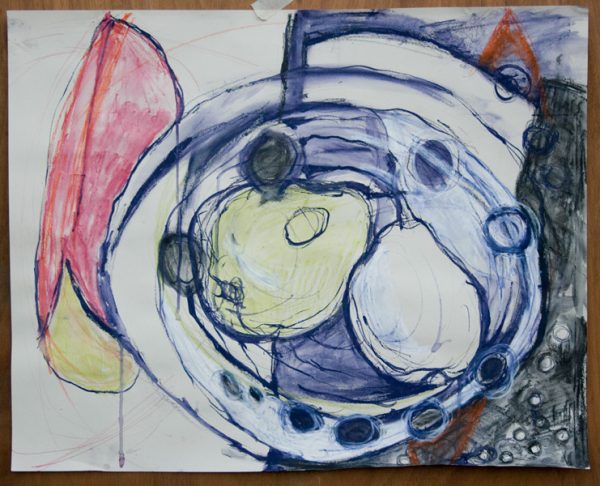Weekend Still-life Painting Courses
April 5th- 7th ( Saturday to Monday )

Painting by Jo Munro-Hunt at Art Courses Wales
Still-life is not as simple as flinging a drape over a table, scattering some apples across it and placing a carafe of wine on the left. It could be, but that does not mean it bodes well for an interesting or inspiring painting.
Still-life is a kind of visual poetry offering endless opportunities to experiment with forms, composition and symbolism. A chance to explore a world of surfaces, natural forms, objects and light.
*
Our Weekend Still-life Painting Courses aim to reveal a number of different approaches to still life with the purpose of helping you find your own way and to always have something on hand to work from. You will also be introduced to a range diverse artists from different times and eras up to the present day
There will be a large selection of man made objects and natural forms. You will be asked to bring things of your choice as well. We will aim to develop at least 3 pieces of work each. These could be a mix of drawings, paintings or collages.
Gallery.
View a selection of still life painting course work produced on previous courses
The weekend still-life painting courses have 8 places and accommodate all levels.
Materials.
It is advised you bring your own materials to draw and paint. We have stock but this is really a standby.There is no shortage of large drawing sheets, primed paper canvases easels, drawing board and work stations. There is also a small stock of brushes for sale, but it is best to bring your own. We will send out a list of a few essentials 6 weeks in advance of the course, but this won’t be extensive as the intention is not to burden you with extra or unnecessary costs.Any problems or advice can be sorted out when you book.
Lunches
Our lunches are outsourced to an award winning chef called Gavin Kellett, who provides us with very wholesome and delicious vegetarian soups. If you have dietary requirements please let us know. Lunch provides a very welcomed break from the working studio. It is held in the spacious dining room in the main house.
Refreshments. Coffee ,teas and biscuits will still be freely available through out the day.
Local Art Shop. Abergavenny
Accommodation and Locality photos
BOOKING: weekend still life painting courses….follow this link
Still-life: Short history and Introduction

Richard Diebenkorn b.1922
